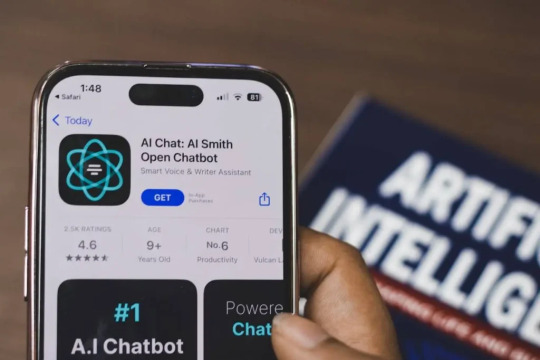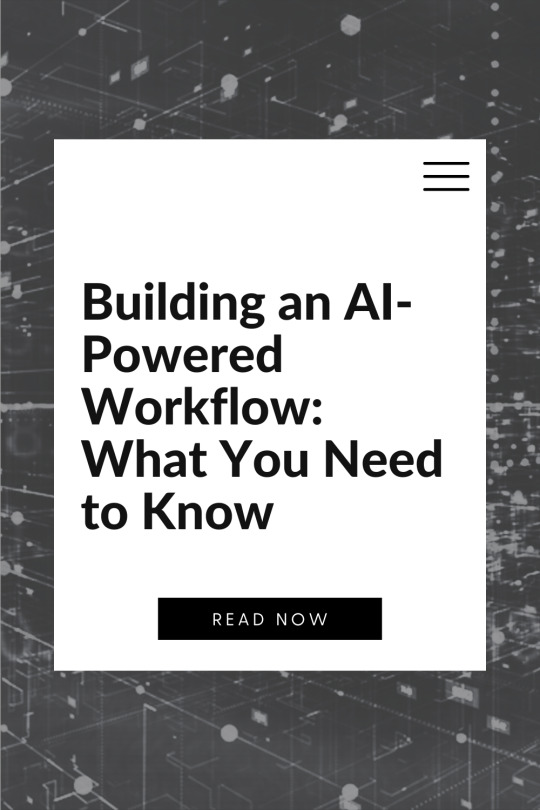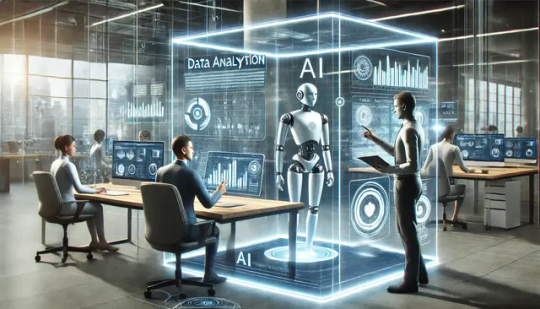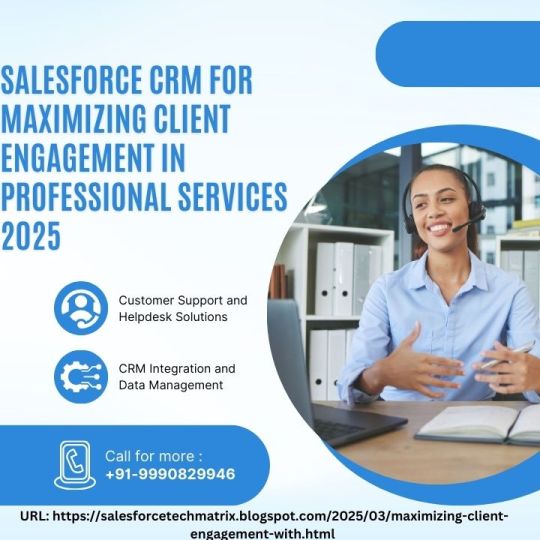#ai for workflow automation
Explore tagged Tumblr posts
Text
AI Customer Support: Enhancing the Customer Experience
AI has massive potential for businesses in all niches. Perhaps its most transformative niche, however, is in making customer service better. Many companies have already embraced AI customer support. In fact, when you contact customer support, you might be talking to an AI assistant without even knowing it! AI has immense power to help businesses provide faster customer service. Today, we explore just some ways AI is changing how companies help their customers.
How AI Customer Support Makes Service Better
As we’ve noted before on the blog, AI is best thought of as a super-helpful digital assistant that never gets tired. Anyone who has worked in customer service knows how invaluable that could be. AI can answer customer questions 24 hours a day, 7 days a week. Now, picture your customers enjoying that constant access. No more waiting until Monday or after lunch to get the help they need.
Of course, generative AI in customer experience is still a tool, not a master. It can’t understand every single niche customer query it encounters. However, AI assistants can handle many common customer questions right away. Think of simple, common queries like “Where’s my package?” or “What is my account balance?”.
AI can help with that in seconds. This means customers get answers faster and don’t have to wait for a human agent to become available. For those with complex issues to address, AI customer support can forward the matter to a human to deal with properly.
Real Examples of Generative AI in Customer Experience
You have already seen generative AI in customer experience in action. Think of those pop-up chat boxes that are now common on most websites. These chatbots use generative AI to understand customers’ questions and provide helpful answers.
Big companies like Amazon and Apple are already using AI to figure out what customers might need help with. Often before they even ask! For example, if you’ve bought something recently, the AI might show you tracking information as soon as you contact customer service.
As you can see, the results are subtle and aren’t always a case of AI ‘pretending to be customer support.’ Instead, AI has become a useful tool to simplify the support cycle while still allowing for human help where needed.
Making Things Personal with AI Customer Support
Personalization has become a key marketing tool. People don’t want to see things that are sort of relevant to them. They want direct, relevant and personal suggestions.
AI can ‘remember’ previous conversations with individuals. This allows it to personalize responses and other cues for the user. If you’ve talked to customer service before about your shoe size, the AI will remember that next time you shop. This makes the experience feel more personal, like talking to someone who knows you.
AI can also offer smart suggestions based on what customers usually buy. It can recommend other things people may like and easily offer that coveted personalized experience.
Helping Human Agents Do Better

So, AI isn’t a replacement for a great customer service team. It’s another team member who helps them work better. When customers have complicated problems, AI can quickly give the human agents all the important information they need.
This means the agent can focus on solving the problem instead of searching for information. The AI agent can offer advice directly when the inquiry is simple and straightforward. This leaves the human agent ready to help the next person in the queue with a complex query.
Making Sure Customers Are Happy
Using generative AI in customer experiences also lets businesses police their service. AI can analyze customer feedback, reviews and even the tone of voice in phone calls to understand how customers really feel.
The quicker you can spot a customer service issue, the better you can respond to it. It’s also useful to tell who is simply ‘having an opinion’ and where there is a genuine service issue. This lets you take any steps needed to address the matter.
Nor has generative AI in customer experiences reached its full potential yet. Developers are working hard to help AI customer support better understand emotion, solve complicated problems and predict customer needs. They’re also working hard to improve how it communicates. There’s a bright future ahead for human-AI collaboration.
Making AI Customer Support Work Better for Everyone

Using generative AI in customer support has benefits for everyone concerned. For business owners, AI in customer service means:
Helping more customers without hiring more staff
Keeping support services running 24/7 without extra cost
Understanding customer needs better
Making sure problems get fixed faster
On the other side, for customers, it means:
Getting help right away, any time of day
Not having to explain the same problem multiple times
More personalized service
Faster solutions to common problems
In short, the future of generative AI in customer experience is burning brightly. The key for businesses looking to implement AI customer support is to start small and build from there. Trial a simple chatbot trained on your most common service questions. Begin to use AI tools to organize your customer information.
Once you have a few implementations in place, you can add more as you learn what works. And always remember: AI works best when it’s part of a team. The goal is to make things better for your customers, not to replace human connection completely.
AI customer support has immense potential to reshape customer service for the better. It’s helping businesses provide faster, more personal service while making things easier for both customers and employees.
As AI keeps getting better, we can expect even more improvements in how generative AI customer experiences help businesses help their customers. If you’re ready to embrace the potential of AI customer support for your business, reach out to AI-First Mindset™ today to help you get started.
0 notes
Text

maybe i dont have the 'growth mindset' necessary to work in the industry but my first thought upon reading this was "kill yourself"
#okay i admit i dont really know how theyre incorporating “AI” into the workflow but as of now i cant imagine its better than automating#like yeah you just automate your workflow. everyone does it. why “AI”.#its just extremely annoying to see even high level educational institutions just throw this shit in. bro its been out for like 3-4 years...#everything looks like a nail type shit
246 notes
·
View notes
Text
Shaping Tomorrow: Three AI Automation Trends to Watch in 2025.
Sanjay Kumar Mohindroo Sanjay Kumar Mohindroo. skm.stayingalive.in Three pivotal AI automation trends for 2025—hyper-automated workflows, AI decision engines, and democratized bots—explained with clear steps to act now. A Quick Look at the Forces Driving Change
In a world racing toward smarter machines, three key #AIautomation trends will define how we work, decide, and innovate in 2025.…
#2025 technology#AI#AI automation trends#artificial-intelligence#decision engines#democratized AI bots#enterprise AI#hyper-automation#News#no-code AI#Sanjay Kumar Mohindroo#smart workflows#technology
0 notes
Text

Building an AI-Powered Workflow: What You Need to Know
The world of work is evolving at lightning speed, and artificial intelligence (AI) is leading the charge. Whether you're looking to cut down on tedious manual tasks, make smarter decisions, or scale your operations effortlessly, AI-powered workflows can be a game-changer. But let’s be real—jumping into AI can feel overwhelming. Where do you even start?
In this comprehensive guide, we will explore what AI-powered workflows are, why they matter, and how to create one that enhances productivity. By the end of this article, you'll have clear knowledge on integrating AI into your business processes.
What is an AI-Powered Workflow?
An AI-powered workflow is a structured process that utilizes artificial intelligence to automate and optimize tasks. It incorporates machine learning algorithms, natural language processing (NLP), robotic process automation (RPA), and other AI technologies to enhance decision-making, improve efficiency, and reduce manual effort.
For example, an AI-powered workflow in customer service might include an AI chatbot handling inquiries, sentiment analysis to gauge customer emotions, and automated ticketing systems to assign queries to the right support agents.
Why Implement an AI-Powered Workflow?
AI-driven workflows offer numerous benefits that can transform how businesses operate. Here are some of the key advantages:
Increased Efficiency: AI can automate repetitive tasks, allowing employees to focus on higher-value activities.
Cost Savings: Reducing manual labor decreases operational costs and improves ROI.
Improved Accuracy: AI minimizes human errors, ensuring precise data processing and decision-making.
Scalability: AI workflows can easily scale to handle increased workloads without requiring additional resources.
Data-Driven Insights: AI can analyze vast amounts of data to uncover trends and inform strategic decisions.
AI-Powered Workflow vs. Traditional Workflow: A Success Comparison
Implementing an AI-powered workflow provides a distinct competitive advantage over traditional workflows. Below is a comparison of key performance metrics between businesses that leverage AI automation and those that rely on manual processes.

A well-implemented AI-powered workflow not only streamlines operations but also leads to higher efficiency, lower costs, and improved decision-making.
Step-by-Step Guide to Building an AI-Powered Workflow
Step 1: Identify Workflow Processes to Automate
Start by analyzing your current workflows and identifying areas where AI can add value. Look for repetitive, time-consuming, and rule-based tasks that could benefit from automation. Common use cases include:
Customer support automation (e.g., chatbots and AI-powered ticketing systems)
Marketing automation (e.g., AI-driven email campaigns, content generation, and ad optimization)
HR and recruitment (e.g., resume screening and candidate matching)
Finance and accounting (e.g., automated invoice processing and fraud detection)
Supply chain management (e.g., demand forecasting and inventory optimization)
Step 2: Choose the Right AI Technologies
Once you've identified areas for AI integration, the next step is selecting the right technologies. Some of the most common AI technologies used in workflows include:
Machine Learning (ML): Enables AI to learn from data and improve over time.
Natural Language Processing (NLP): Helps AI understand and process human language.
Robotic Process Automation (RPA): Automates rule-based tasks using AI-powered bots.
Computer Vision: Allows AI to process and analyze images and videos.
Predictive Analytics: Uses AI to forecast future trends and behaviors.
Step 3: Select AI Tools and Platforms
Choosing the right AI tools and platforms is crucial for successful implementation. Some of the leading AI workflow tools include:
Google AI/ML Tools: TensorFlow, Google Cloud AI, and AutoML
IBM Watson: AI-powered automation and analytics solutions
Microsoft Azure AI: AI and ML services integrated with cloud computing
UiPath: Leading RPA software for automating business processes
OpenAI: GPT-powered AI solutions for content creation and automation
Step 4: Integrate AI into Your Workflow
Once you've selected your AI technologies and tools, it's time to integrate them into your existing workflows. Here’s how:
Map Out Your Workflow: Define each step of your workflow and identify where AI will be integrated.
Develop AI Models: If using machine learning, train your AI models with relevant data.
Use APIs and Automation Tools: Many AI solutions provide APIs that allow seamless integration into existing software.
Test and Validate: Run pilot tests to ensure the AI-powered workflow operates correctly before full-scale implementation.
Monitor Performance: Continuously monitor AI’s impact, gather feedback, and refine the workflow for optimal performance.
Step 5: Ensure Data Security and Compliance
AI relies on vast amounts of data, making security and compliance a top priority. Here’s how to safeguard your AI-powered workflow:
Follow Data Privacy Regulations: Ensure compliance with GDPR, CCPA, and other relevant laws.
Use Secure AI Models: Encrypt sensitive data and restrict access to AI models.
Regular Audits and Updates: Conduct periodic security audits to address potential vulnerabilities.
Step 6: Train Employees and Optimize the Workflow
AI should enhance—not replace—your workforce. Provide training sessions to help employees adapt to the AI-driven workflow. Encourage a culture of collaboration where AI assists in decision-making rather than replacing human expertise.
Additionally, continuously optimize your AI workflow by collecting user feedback, analyzing performance data, and refining processes.

Key Tips for a Successful AI Workflow Implementation
Implementing an AI-powered workflow can be challenging, but following these best practices can improve your chances of success:
Start Small: Begin with a pilot project before scaling AI implementation across your organization.
Ensure High-Quality Data: AI models rely on accurate, clean, and relevant data for optimal performance.
Involve Stakeholders Early: Collaborate with teams across departments to ensure smooth adoption.
Monitor AI Performance: Regularly track and analyze AI output to detect and correct errors.
Maintain Transparency: Ensure employees and customers understand how AI is being used in workflows.
Continuously Optimize: AI is not a one-time implementation; refine and improve your workflows over time.
Challenges and How to Overcome Them
While AI-powered workflows offer numerous benefits, they also come with challenges. Here’s how to address common obstacles:
High Implementation Costs: Start small with pilot projects before scaling up.
Data Quality Issues: Ensure AI models are trained with clean, high-quality data.
Integration Complexity: Choose AI tools that integrate easily with existing systems.
Resistance to Change: Educate employees on AI’s benefits and provide hands-on training.
Future Trends in AI-Powered Workflows
AI technology is constantly evolving, and staying ahead of trends can give businesses a competitive edge. Here are some emerging trends to watch:
AI-Augmented Decision-Making: AI will assist, rather than replace, human decision-makers.
Hyperautomation: The combination of AI, RPA, and advanced analytics for end-to-end automation.
Conversational AI: More advanced chatbots and virtual assistants.
AI-Driven Personalization: Hyper-personalized customer experiences using AI.
AI Ethics and Governance: More focus on responsible AI development and usage.
Building an AI-powered workflow can significantly enhance productivity, accuracy, and efficiency in various business operations. By following the step-by-step approach outlined in this guide—identifying automation opportunities, selecting the right AI technologies, integrating AI into workflows, ensuring data security, and continuously optimizing—you can successfully implement AI in your organization.
Learn more about DataPeak:
#datapeak#factr#saas#technology#agentic ai#artificial intelligence#machine learning#ai#ai-driven business solutions#machine learning for workflow#ai driven business solutions#ai business tools#aiinnovation#dataanalytics#data driven decision making#data analytics#digitaltools#digital technology#digital trends#cloudmigration#cloudcomputing#ai driven data workflow automation#business workflow
0 notes
Text
Online Sales Funnel Mistakes and Fixes for Military Entrepreneurs
Why Your Funnel Feels Like a Leaky Bucket Have you ever felt like your online business is stuck on a treadmill? You’re doing all the things—running ads, capturing leads, even setting up fancy automations—but conversions are crawling like rush-hour traffic. The harsh reality is that you’re not broken. Your online sales funnel is there. Think of your funnel like a garden hose. If there are leaks…
#9-5 Freedom Hacker Challenge#affiliate marketing#ai#AI automation#AI Bots#artificial intelligence#freedom breakthrough#Get Started#make money online#Military Veteran#workflow automation tools
0 notes
Text
Supercharge Salesforce CRM with AI-Powered Automation Using Agentforce
In the fast-paced world of customer relationship management, businesses using Salesforce CRM must continually find ways to streamline operations, enhance customer experiences, and improve response times. That’s where Agentforce, a cutting-edge AI agent framework, makes its mark—bringing smart automation directly into your Salesforce environment.
This blog explores how Agentforce integrates with Salesforce, tapping into both standard and custom objects within the Salesforce data model. From automating support cases to enriching lead profiles and triggering contextual workflows, Agentforce transforms AI agents into intelligent digital teammates that act on real-time CRM data.
You'll gain a deep understanding of:
Salesforce data models and how Agentforce uses them via the Salesforce API
The complete integration setup, including OAuth credentials, connected apps, and data mapping
Step-by-step instructions for setting up the connection, testing API calls, and mapping objects and fields
Real-world use cases where Agentforce improves productivity—such as AI-powered lead routing, ticket prioritization, and automated sales alerts
The blog also covers best practices to keep your integration secure and efficient:
Applying role-based access controls
Ensuring data encryption
Maintaining logs and audit trails
Writing clear prompts for better AI outputs
Iterating and improving based on business needs
Common integration pitfalls—like token expiration, permission issues, or faulty API calls—are addressed with quick troubleshooting tips, ensuring a smooth experience as you scale.
With Agentforce and Salesforce working in harmony, your business can reduce manual tasks, accelerate decision-making, and boost overall CRM performance.
0 notes
Text
Open Source AI Tools for Web Designers
Introduction Let’s face it—web design isn’t what it used to be. You no longer need to spend endless nights tweaking every pixel by hand. Thanks to open-source AI tools, web designers now have digital co-pilots that speed up workflows, enhance creativity, and take the grunt work off your plate. Whether you’re a freelancer, agency pro, or in-house designer, these tools are like having an extra pair…
0 notes
Text

#Autonomous workflow automation#Context-aware AI agents#Lightweight intelligent agents#Domain-specific AI assistants#Emergent behavior in AI agents
1 note
·
View note
Text
Marketing Automation the Future? Here’s What Experts Say
Discover the future of marketing automation and how AI-driven solutions are transforming digital strategies. Learn expert insights,

#Marketing automation#sales funnel#lead nurturing#customer engagement#conversion optimization#automated emails#CRM integration#workflow automation#digital marketing#AI marketing#sales growth
0 notes
Text
AI Colleagues Are Here: How Agentic Intelligence is Reshaping Workplaces
You arrive at the office, and before you even touch your desk, the day’s work is already in motion. Reports are prepared, emails are drafted, meetings are scheduled, and client follow-ups are handled—all without your intervention. It feels as if an invisible assistant has been working behind the scenes, anticipating your needs and executing tasks seamlessly. This isn’t a glimpse into the distant future but a reality shaped by agentic AI, a new generation of artificial intelligence that doesn’t just respond to commands but proactively thinks, plans, and acts, transforming the modern workplace in ways once thought impossible.

#AI in workplaces#agentic AI#AI automation#workplace automation#AI-powered assistants#future of work#artificial intelligence in business#AI-driven workflows#enterprise AI#AI job impact
0 notes
Text
You’re Not Stuck—You’re Bottlenecked (Here’s How AI Clears the Path)
You’re Not Stuck You’re Bottlenecked (Here’s How AI Clears the Path) Let’s be honest, how many times have you caught yourself saying, “I just need more time”? As if somewhere between the back-to-back Zooms and the Canva carousel you’re tweaking for the fifth time, the universe might deliver you a clone and an extra 8 hours. But here’s the truth you didn’t ask for (but absolutely need): You…
#4D Strategy#AI for business clarity#business bottlenecks#Business Growth#Business Strategy#Entrepreneur#Entrepreneurship#Lori Brooks#mindset systems#PRISM method#Productivity#Technology Equality#Time Management#workflow automation
0 notes
Text
CaseFox introduces MatterSuite, an AI-powered matter management platform designed to streamline workflows for law firms and in-house legal teams. With advanced AI-driven legal research, smart automation, document management, and seamless collaboration, MatterSuite empowers legal professionals to manage cases more efficiently than ever. Discover how AI is revolutionizing legal practice
#legal matter management#legal tech#legal software#law firm software#legal operations software#legal ai tool#ai powered legal software#legal software solution#legal workflow automation
1 note
·
View note
Text

Discover how Salesforce helps professional services enhance client engagement, automate workflows, and boost ROI in 2025 with AI-powered CRM solutions.
Read more: https://salesforcetechmatrix.blogspot.com/2025/03/maximizing-client-engagement-with.html
#Salesforce for professional services#client engagement strategies#Salesforce CRM 2025#Salesforce implementation partner#AI-driven CRM tools#client retention Salesforce#automate workflows#Salesforce benefits for consulting firms#professional services CRM#Salesforce Marketing Cloud
0 notes
Text
How to Use ChatGPT Plugins to Automate Daily Operations
Running a business—or even just your personal life—can feel like juggling flaming swords while riding a unicycle. But what if you had a super-smart assistant who could take care of the repetitive tasks for you, work 24/7, and never get tired or ask for coffee breaks? That’s where ChatGPT plugins come into play. In this guide, we’re diving into how to use ChatGPT plugins to automate your daily…
0 notes
Text
Workplace Efficiency in the Age of Innovation
Technological advancements have reshaped workplace efficiency across industries, revolutionizing operations, communication, and decision-making. From artificial intelligence (AI)-driven automation to enhanced cybersecurity measures and remote work solutions, businesses are integrating technology to remain competitive in an evolving landscape. Companies that leverage efficient digital tools optimize workflows, increase productivity, and enhance communication.
AI-driven tools streamline repetitive tasks, improve accuracy, and allow professionals to focus on strategic responsibilities. Meanwhile, businesses are prioritizing cybersecurity strategies to protect digital assets, while remote work solutions continue to drive workplace flexibility. Organizations must adapt to these shifts to maintain efficiency and ensure long-term success in an increasingly digital environment.
Let's explore how technology is reshaping key aspects of workplace efficiency, from automation to collaboration.
The Role of AI and Automation in Streamlining Workflows
AI-driven tools are transforming business processes by minimizing manual tasks, increasing precision, and allowing teams to focus on strategic initiatives. Businesses are also integrating AI-powered solutions in management to enhance productivity and increase operational agility. Modern product managers now use AI to assist with things like estimating timelines, making risk assessments, and completing document searches.
The integration of AI in product management is also influencing business strategies by analyzing market trends, predicting completion times, and optimizing routine tasks. AI-driven analytics also help businesses tailor offerings to customer needs, improving overall efficiency. Automation tools further contribute by optimizing supply chains, improving customer service, and eliminating inefficiencies. With AI-powered solutions, businesses can focus on growth while maintaining seamless operational workflows.
Cybersecurity Enhancements for a More Secure Workplace
As businesses become more dependent on digital systems, cybersecurity remains a priority. Cyber threats are growing in sophistication, prompting companies to implement AI-driven security solutions to detect and mitigate risks. AI-powered threat detection systems analyze patterns, identify anomalies, and respond to security breaches before they escalate.
Organizations must also prioritize cybersecurity awareness to reduce risk. Employee training programs, device hardening protocols, end-to-end encryption, and proactive monitoring help safeguard sensitive data. A comprehensive cybersecurity strategy strengthens an organization's defenses and minimizes the risk of a potentially costly breach. Businesses that take a proactive approach to cybersecurity also earn the trust of consumers, who care about their personal data now more than ever before.
Technology’s Impact on Workplace Mobility and Remote Work Efficiency
Cloud computing, digital collaboration platforms, and AI-driven mobility solutions have redefined remote work. Businesses rely on cloud-based systems to store data securely, allowing teams to access information from anywhere. Companies can also make employee relocation easier by offering incentives and implementing new technology. For example, AI optimizes workplace relocation by streamlining logistics, predicting potential challenges, and enhancing workforce mobility.
Furthermore, digital collaboration tools support real-time communication, improving productivity for remote teams. AI-powered virtual assistants, automation software, and project management platforms streamline workflow optimization. Companies that invest in these technologies empower employees with flexible work environments, leading to higher engagement and efficiency.
Decision-Making and Predictive Analytics
Big data and AI-powered analytics are reshaping communication and decision-making across industries. AI algorithms are capable of wielding complex data sets to accurately forecast market trends and help managers make more informed decisions. This can identify opportunities for growth and drive innovation.
Predictive analytics has significant applications across various industries. In healthcare, AI has already made waves by successfully uncovering cures for diseases with the support of human researchers. Meanwhile, the financial sector relies on AI-powered analytics for risk assessment, fraud detection, and investment planning. Retailers also use predictive models to enhance inventory management and personalize customer experiences. Businesses that integrate predictive analytics into their strategies can gain a competitive advantage by improving efficiency and anticipating market demands.
Balancing Technology with Workplace Culture
While technology significantly enhances workplace efficiency, it is essential to balance innovation with a human-centric workplace culture. Employees play a critical role in the successful adoption of new technologies. Even the most advanced systems may fail to achieve their intended impact without proper training, communication, and engagement.
Companies should prioritize employee training programs to ensure staff members feel confident using AI-driven tools and digital platforms. Encouraging a culture of adaptability and continuous learning can help organizations transition smoothly into technology-driven operations. Employee feedback should also be incorporated into technology adoption strategies to ensure that solutions enhance—not hinder—daily workflows.
While AI-driven chatbots and automation tools improve response times, personal engagement and empathy remain irreplaceable. Businesses must balance automation and human interactions to provide customers and clients with a seamless yet personalized experience.
The Evolution of Workplace Collaboration Tools
Collaboration has evolved as businesses adopt digital tools that enhance teamwork and efficiency. Video conferencing platforms, cloud-based document sharing, and AI-powered scheduling assistants help organizations maintain seamless communication, whether teams are working remotely or in the office. These tools improve workflow by allowing employees to collaborate in real-time, reducing delays in project execution.
AI-driven collaboration tools provide automated meeting summaries, sentiment analysis, and task prioritization, and further streamlining operations. Businesses are also integrating virtual reality (VR) into collaboration efforts, enabling immersive experiences for training and team-building activities. Organizations must continue adopting tools that enhance communication and foster productivity as workplace dynamics shift.
Future Trends in Workplace Technology
The workplace will continue evolving as technology advances. Emerging trends like AI-driven chatbots, machine learning-based automation, and blockchain technology will further enhance efficiency and security. AI-powered support systems are improving customer experience, too, by reducing response times when consumers raise a query.
Augmented reality (AR) and virtual reality (VR) improve workplace efficiency, too. These technologies enable immersive training experiences, helping employees develop new skills in real-time. AI-driven virtual workspaces foster collaboration across teams, break geographical barriers, and enable seamless remote work interactions.
AI-powered language translation tools also improve global business communication, ensuring seamless collaboration among multilingual teams. Organizations that embrace these innovations will stay ahead in an increasingly competitive business environment.
Conclusion
Technology transforms workplace efficiency, influencing how businesses operate, collaborate, and secure digital assets. AI-driven automation, cybersecurity enhancements, remote work solutions, and predictive analytics drive operational success.
However, businesses must also focus on workplace culture to ensure employees remain engaged and adaptable to change. AI alone isn’t enough to create a culture of innovation. Instead, strategic leaders must make informed choices to empower those employees who make a difference in the workplace. Empowered, motivated employees will make the most of tools like AI and workflow software and are sure to identify opportunities that boost he business’ bottom line.
Katie Brenneman
Katie is a passionate writer specializing in time management, marketing, and education-related content. When she isn't writing, you can find her with her nose buried in a book or hiking with her dog, Charlie. To connect with Katie, you can follow her on Twitter.
Share in the comments below: Questions go here
#workplace efficiency#efficiency#age of innovation#technological advancements#digital tools#cybersecurity#digital environment#AI-powered solutions#product management#workplace mobility#remote work efficiency#digital collaboration#virtual assistants#automation software#project management platforms#workflow optimization#market trends#identify opportunities#growth and innovation#productivity#augmented reality#virtual reality
0 notes
Text
How Marketing Automation Saves You 20+ Hours a Week
Save 20+ hours per week with marketing automation! Learn how to automate marketing tasks, improve productivity with automation, and optimize marketing workflow automation for business success.
https://inklingmarketing.co/how-marketing-automation-saves-you-20-hours-a-week/
#Marketing automation#sales funnel#lead nurturing#customer engagement#conversion optimization#automated emails#CRM integration#workflow automation#digital marketing#AI marketing#sales growth
0 notes